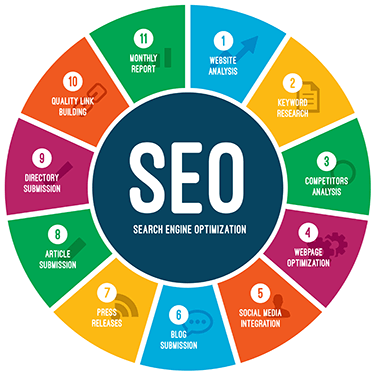Understanding On-Site Search Engine Optimization
 On-Site Search engine optimization (SEO) is the process of affecting the positioning of a website or a web page in a search engine's unpaid results. In general, the higher your webpage appears in the search results page, and the more frequently a site appears in the search results list, the more visitors it will receive from the search engine's users. The goal of a search engine marketer, like Sweet Brier Media is to secure a top position for strategic keywords on the primary search results pages.
On-Site Search engine optimization (SEO) is the process of affecting the positioning of a website or a web page in a search engine's unpaid results. In general, the higher your webpage appears in the search results page, and the more frequently a site appears in the search results list, the more visitors it will receive from the search engine's users. The goal of a search engine marketer, like Sweet Brier Media is to secure a top position for strategic keywords on the primary search results pages.
Designing Websites for People & Robots
High quality websites should be designed to deliver a high quality, high value experience to the website visitor first and foremost. After human interest, websites need to be structured to be as friendly as possible to search engine robots looking to index worthwhile content.
There are elements of both art and science involved in the understanding of human decision making on the Internet as analyzed through search data and website statistics.
About Search Engines
Search engines have two major functions: crawling and building indexes of information, and providing search users with a ranked list of the websites they've determined are the most relevant. The hyperlink "link" structure of the web serves to bind all of the pages and content together. Website links allow the search engines' automated robots, called "crawlers" or "spiders," to reach the many billions of interconnected documents on the web. The leading search engines, such as Google, Bing and Yahoo, use thse robot crawlers to find pages for their algorithmic search results. The search engines crawl websites and then update the web content indexed in their search engine results pages.
Put Out the Welcome Mat
Website optimization is essentially putting out the welcome mat to encourage your content to be included in search engine results pages. Optimizing websites involves editing webpages and website content, format, tag structure, HTML and associated coding to both increase webpage and website relevance to specific keywords and to remove barriers to the indexing activities of search robots.
 Think Mobile First
Think Mobile First
As of May 2015, mobile search has finally surpassed desktop search in the number of webpages served. Google is developing and pushing mobile search as the future in all of its products and many brands are beginning to take a different approach on their internet strategies.
White Hat & Black Hat Strategies
SEO techniques can be classified into two broad categories: techniques that search engines recommend as part of good design, and those techniques of which search engines do not approve. The search engines attempt to minimize the effect of the latter, among them spamdexing. Industry commentators have classified these methods, and the practitioners who employ them, as either white hat SEO, or black hat SEO. White hat SEO strategies tend to produce results that last a long time, whereas black hats anticipate that their sites may eventually be banned either temporarily or permanently once the search engines discover what they are doing.
Contact us today for more information
![]()

